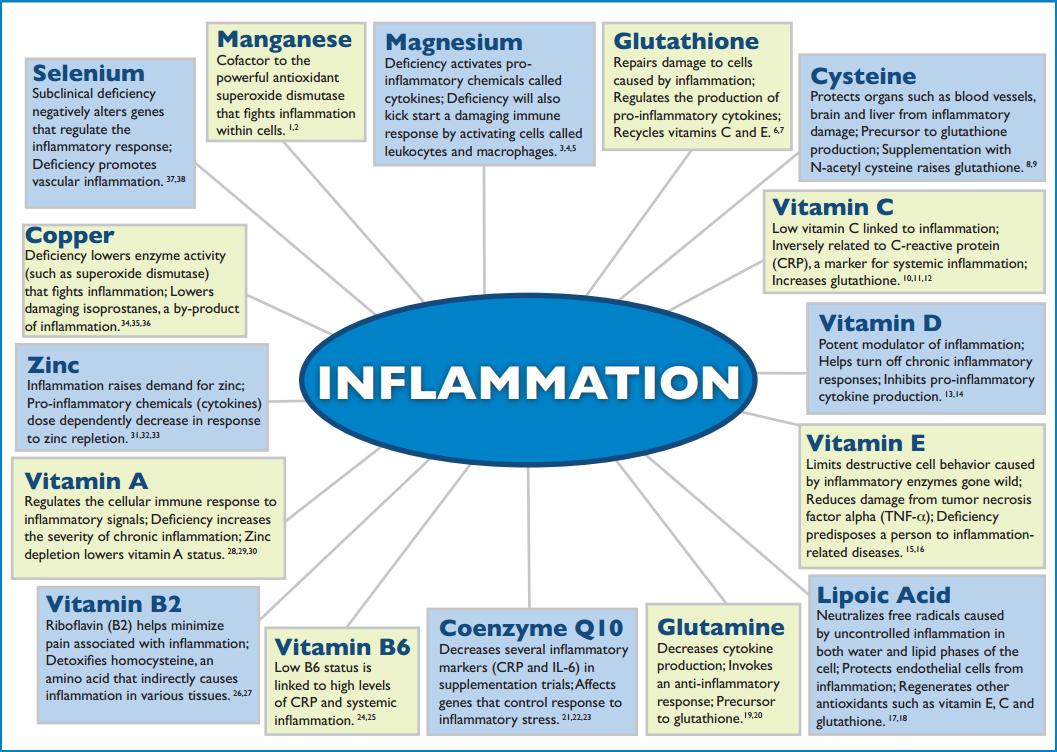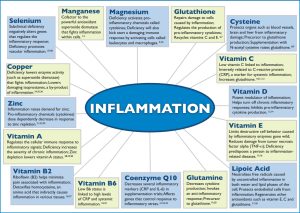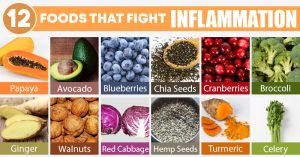Introduction
Introduce the concept of an anti-inflammatory eating plan and its significance in supporting overall health. Explain the rationale behind focusing on specific foods and nutrients to reduce inflammation in the body.
Understanding Anti-Inflammatory Eating
Define what an anti-inflammatory eating plan entails, highlighting its objective to minimize chronic inflammation by incorporating foods that have demonstrated anti-inflammatory properties.
Essential Nutrients for Inflammation Control
- Omega-3 Fatty Acids: Detail the importance of omega-3s found in fatty fish (salmon, mackerel), flaxseeds, and walnuts in reducing inflammation.
- Antioxidants: Discuss the role of antioxidants in neutralizing free radicals and mitigating inflammation, focusing on fruits (berries), vegetables, and spices (turmeric, ginger).
- Polyphenols: Highlight the presence of polyphenols in green tea, olive oil, and dark chocolate, known for their anti-inflammatory effects.
Image By: https://th.bing.com/
Key Foods in an Anti-Inflammatory Diet
- Fruits: Explore the variety of fruits rich in antioxidants and flavonoids, emphasizing berries, citrus fruits, and apples.
- Vegetables: Discuss the importance of including a diverse range of colorful vegetables like leafy greens, broccoli, and bell peppers.
- Whole Grains: Highlight the benefits of whole grains such as quinoa, brown rice, and oats, which contain fiber and nutrients that aid in reducing inflammation.
- Healthy Fats: Emphasize sources of healthy fats like avocados, olive oil, nuts, and seeds for their anti-inflammatory properties.
- Fatty Fish: Explain the significance of incorporating fatty fish rich in omega-3 fatty acids into the diet for inflammation control.
Meal Planning and Recipes
- Sample Meal Plan: Provide a sample day’s meal plan showcasing anti-inflammatory foods in breakfast, lunch, dinner, and snacks.
- Recipes: Include simple and flavorful recipes featuring anti-inflammatory ingredients, such as a berry-spinach smoothie, roasted vegetable quinoa bowl, and grilled salmon with turmeric.
Practical Tips for Adopting an Anti-Inflammatory Diet
- Grocery Shopping Guidance: Offer tips on selecting and purchasing anti-inflammatory foods.
- Meal Preparation Strategies: Provide advice on meal prepping and incorporating these foods into daily meals.
Image By: https://th.bing.com/
Conclusion
Summarize the importance of an anti-inflammatory eating plan, highlighting how specific foods and nutrients can play a pivotal role in reducing inflammation and promoting overall health and well-being.






